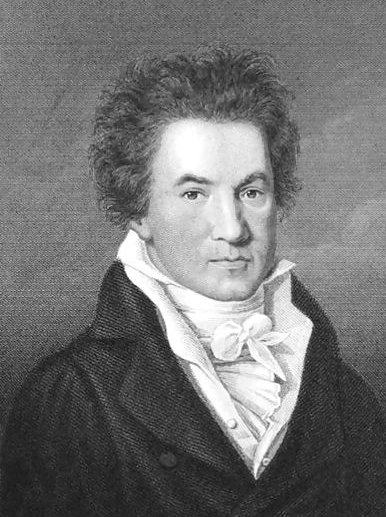|
||
|
Beethoven's violin concerto was written in 1806 for performance by Franz Clement, the 26 year old principal violinist and conductor at the Theater an der Wien in Vienna. It had an unfortunate early history. Beethoven completed the work in a rush only two days before the first performance. The surviving autograph score is a mass of crossings out, corrections and alternative versions. Clement certainly had little time to learn the work, and even less to rehearse it with the orchestra. One can only assume that the performance was far from satisfactory. In the same concert Clement played a piece of his own in which he held the violin upside down. This act of flippancy may have distracted the critics from the brilliance of the concerto and a frosty press notice stated that "Beethoven could put his undoubtedly great talents to better uses". The concerto was rarely played and remained unappreciated until Josef Joachim and Felix Mendlessohn championed it in the 1840s, after which it rightly became regarded as one of the greatest works of the genre. As a consequence of its early neglect there are doubts as to Beethoven's final intentions for the solo part. There are two versions in his hand. One is simpler and more violinistic and may possibly have been created in conjunction with Clement. Both versions differ from the published score. The melodic material of the first movement is remarkably simple throughout. The lyrical second subject, for example, mostly moves up and down a scale, and the famous motive that pervades the movement, heard at the outset on the tympani, is nothing more than five repeated notes. This seemingly unpromising material is developed with such skill and invention that the listener is drawn through a variety of moods, sometimes serene and reflective, sometimes dramatic and threatening and sometimes sad and noble. The contrast between these moods provides the dramatic substance of the movement. The simplicity of the melodic ideas forms the perfect foil for the soloist's virtuoso passages. Like many of Beethoven's middle period works, the movement is constructed on a large scale being in itself longer than a typical concerto of the time. In contrast to the enigmatic first movement the second movement is shorter and has consistent lyrical beauty, It is a series of variations on a theme first stated by muted strings. Beethoven departs from the established use of variation form. The theme is repeated almost verbatim each time with varying instrumentation. The soloist never actually states the theme but weaves a delicate tracery of sound above it. The final variation consists of an entirely new idea, stated once against the original theme, then itself varied as the original theme subsides. The finale is one of Beethoven's most brilliant movements. It is exhilarating and energetic throughout, filled with delightful dialogues between the soloist and the orchestral instruments. The mood is unquestioningly happy and vivacious. Beethoven's violin concerto was performed by the Portobello Orchestra on the 19th March 2005 with soloist Mihkel Kerem and conductor Anthony Weeden, and on the 21st March 2015 with soloist Iain Gibbs and conductor William Church. back |

